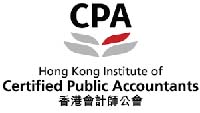This year marks the tenth anniversary of the Belt & Road Initiative yet only yesterday has an outsider analysis of its cost to China been assembled.
BRI has long been opaque; big, albeit that, not being centrally coordinated or even defined, no one agrees on how big (the American Enterprise Institute reckons a comparatively modest $838 billion between 2013 and 2021; China’s Foreign Ministry reckons nearly $1 trillion to March 2021; Beijing’s own Belt & Road portal requires a deep dive from which one may not resurface); and controversial in that Chinese lenders and investors have been prepared to boldly go where no one has gone before, not even Captain Kirk. Build quality, treatment of local labour and landowners, expensive contract prices and financing terms and a reluctance to cooperate with the West in restructurings all add to the brew.
Once BRI was enshrined in China’s constitution in 2018, Chinese contractors ventured forth, not to strange new worlds perhaps, but at least across the globe, confident that they would be paid by the Chinese development banks, which in turn passed on the considerable political risk to state – owned Sinosure until even it had had its fill by the time of the Addis Ababa – Djibouti freight railway in 2018.
The report yesterday came from the World Bank, Harvard Kennedy School, Kiel Institute for the World Economy and William and Mary’s AidData when they published what they termed the first comprehensive data set on China’s overseas bailouts between 2000 and 2021. Across 128 bailout operations and 22 debtor countries, China effectively created a new system of international rescue lending as the PBOC provided $170 billion of global swap lines (including repeated rollovers of swaps coming due) in liquidity support and Chinese state – owned banks and enterprises loaned a further $70 billion in rescue loans for balance of payments support. Whilst this includes the period before BRI was formally consecrated, they also found that between 2019 and 2021, China granted some $104 billion worth of rescue loans. Taking AEIs’ numbers that’s a thumping default rate of 12% but, in any event, these numbers are unprecedented.
The US had led the charge in branding BRI as debt trap diplomacy. In Logie Group’s view, this is unfair. More prosaically, these were typically deals put together in a rush between a powerful player on one side and an inexperienced one on the other, neither side taking much expert advice when doing so. It is unsurprising that so many BRI deals have gone wrong.
These problem loans have to date been renegotiated at a Govt to Govt level, again with little expert advice on either the debtor or even creditor side. Many of these restructurings will in due course be seen to have been little more than exercises in kicking cans down roads. There are early indications, however, that sovereigns, sub – sovereigns and private sector players alike are beginning to realise after all, that expert input, whilst not being able to necessarily resolve fundamental economic problems, can at least ameliorate some of the impact so is worth invoking and, yes, paying for. The HK government has long recognised that the full range of this expertise – whether used in negotiating more robust contractual structures up front or in resolving defaults after the event, can be found here in HK. And, when it comes to fundamental allocation of risk to those most able / willing to control / at least take it then how to finance that allocation of risk, this includes Logie Group, you might not be surprised to hear.







